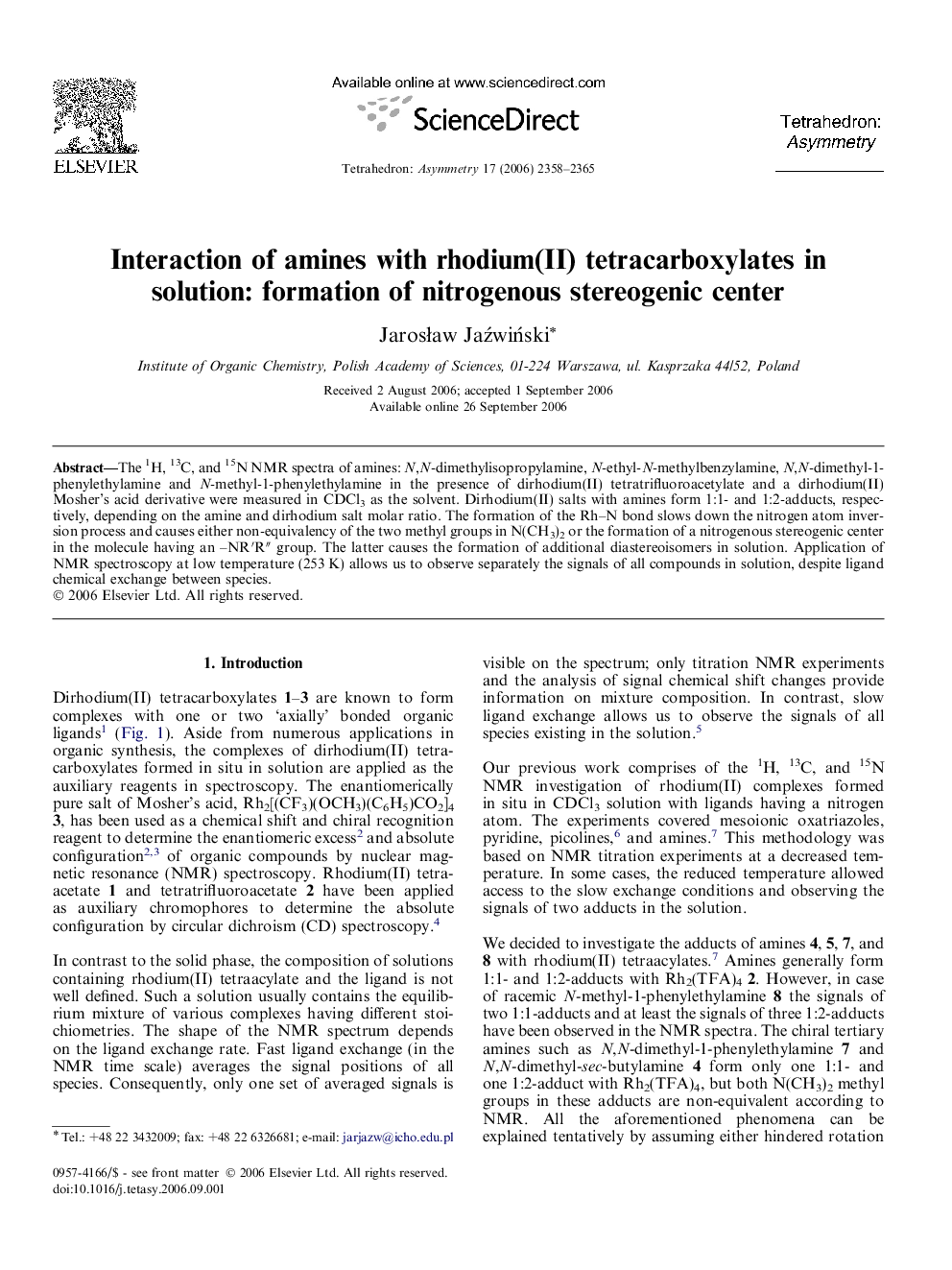| Article ID | Journal | Published Year | Pages | File Type |
|---|---|---|---|---|
| 1348157 | Tetrahedron: Asymmetry | 2006 | 8 Pages |
The 1H, 13C, and 15N NMR spectra of amines: N,N-dimethylisopropylamine, N-ethyl-N-methylbenzylamine, N,N-dimethyl-1-phenylethylamine and N-methyl-1-phenylethylamine in the presence of dirhodium(II) tetratrifluoroacetylate and a dirhodium(II) Mosher’s acid derivative were measured in CDCl3 as the solvent. Dirhodium(II) salts with amines form 1:1- and 1:2-adducts, respectively, depending on the amine and dirhodium salt molar ratio. The formation of the Rh–N bond slows down the nitrogen atom inversion process and causes either non-equivalency of the two methyl groups in N(CH3)2 or the formation of a nitrogenous stereogenic center in the molecule having an –NR′R″ group. The latter causes the formation of additional diastereoisomers in solution. Application of NMR spectroscopy at low temperature (253 K) allows us to observe separately the signals of all compounds in solution, despite ligand chemical exchange between species.
Graphical abstractAmines NRR′R″ form with chiral dirhodium(II) tetraacylates the 1:1- and 1:2-adducts having nitrogenous chiral centers. Despite ligand exchange in the solution, the individual species are detectable by low temperature NMR.Figure optionsDownload full-size imageDownload as PowerPoint slide
